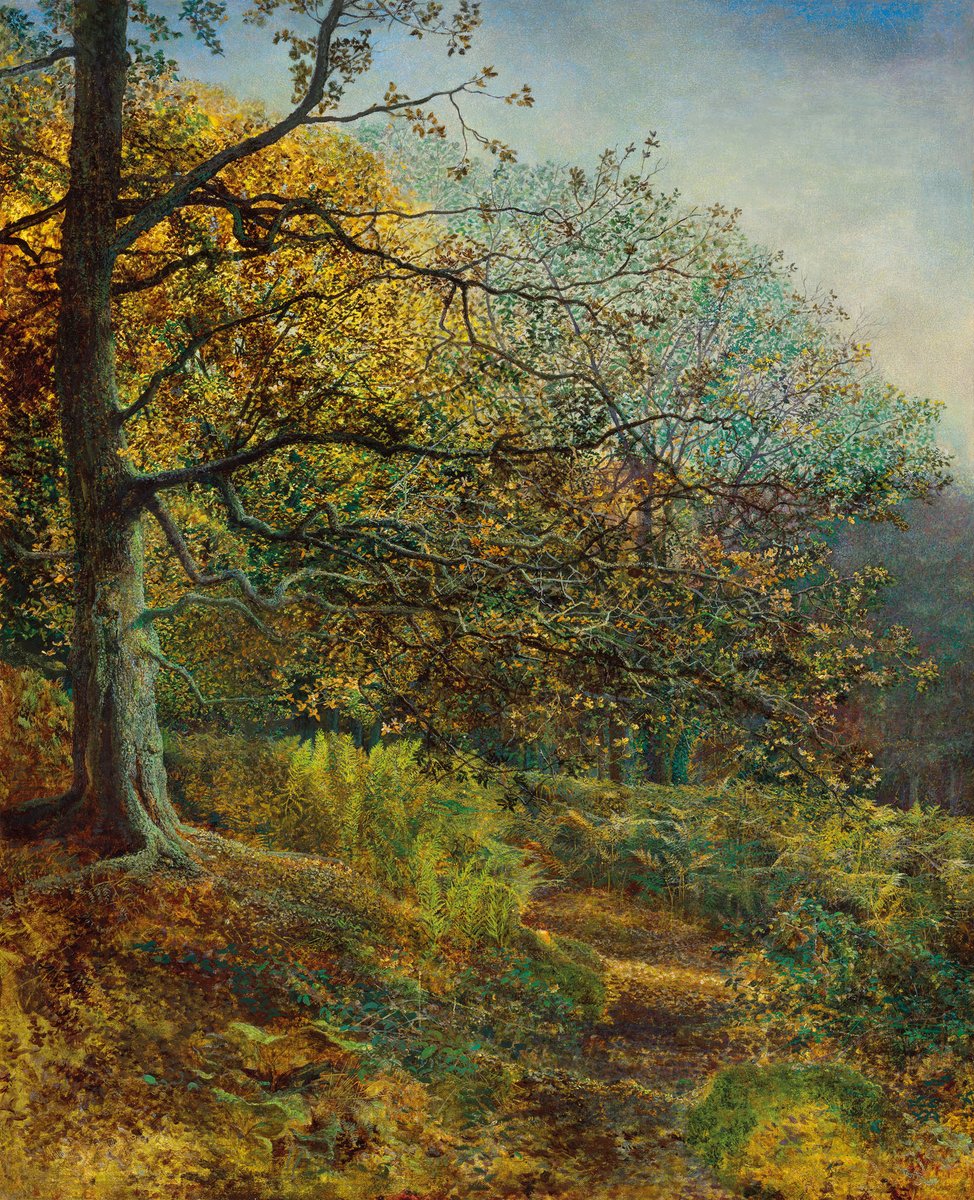This is Borobudur in Indonesia, one of the world's most important and mysterious buildings.
Why? Because it's the largest Buddhist temple ever built — and it was also abandoned for nearly one thousand years...
Why? Because it's the largest Buddhist temple ever built — and it was also abandoned for nearly one thousand years...

First, who built Borobudur?
It was constructed in the 9th century AD under the relatively mysterious Shailendra Dynasty, which ruled the island of Java at that time.
The Shailendras built dozens of Buddhist temples in central Java, and Borobudur was their grandest.
It was constructed in the 9th century AD under the relatively mysterious Shailendra Dynasty, which ruled the island of Java at that time.
The Shailendras built dozens of Buddhist temples in central Java, and Borobudur was their grandest.

But the Shailendras left Java for Sumatra and by the 11th century Borobudur had fallen from use.
Thereafter it was covered by volcanic ash and consumed by the jungle.
Other than references to a mysterious temple hidden in the forests of Java, Borobudur disappeared from history.
Thereafter it was covered by volcanic ash and consumed by the jungle.
Other than references to a mysterious temple hidden in the forests of Java, Borobudur disappeared from history.

Until 1814, when it was investigated by the British governor of Java, Stamford Raffles, who had been told about it by local people.
Over the next century Borobudur was gradually excavated, though it remained in partial ruins.
In 1911 it was restored by Dutch archaeologists.
Over the next century Borobudur was gradually excavated, though it remained in partial ruins.
In 1911 it was restored by Dutch archaeologists.

Another comprehensive restoration took place from 1973-1983.
Borobudur was essentially dismantled and rebuilt, stone by stone, with added drainage to ensure its survival — one of history's biggest conservation projects.
It then became a UNESCO World Heritage Site in 1991.
Borobudur was essentially dismantled and rebuilt, stone by stone, with added drainage to ensure its survival — one of history's biggest conservation projects.
It then became a UNESCO World Heritage Site in 1991.

Borobudur is the largest Buddhist temple in the world, and its design is unique.
There are nine levels (nine being an important number in Buddhism) — a base, five square tiers, and three circular tiers.
All are concentric, and they are crowned by a huge stupa.
There are nine levels (nine being an important number in Buddhism) — a base, five square tiers, and three circular tiers.
All are concentric, and they are crowned by a huge stupa.

Its plan is based on the "mandala", a form of highly symbolic, geometric design sacred in Buddhism and Hinduism.
There is no single layout or purpose to the mandala, but in the case of Borobudur it is seemingly based on mandalas that represent Buddhist cosmology.
There is no single layout or purpose to the mandala, but in the case of Borobudur it is seemingly based on mandalas that represent Buddhist cosmology.

Borobudur also references Mount Meru, the holy mountain at the centre of all universes.
Many Buddhist, Hindu, and Jain temples were similarly designed to imitate the form of a mountain.
The scale of Borobudur, however — each side is 120 metres long — is simply colossal.
Many Buddhist, Hindu, and Jain temples were similarly designed to imitate the form of a mountain.
The scale of Borobudur, however — each side is 120 metres long — is simply colossal.

And Borobudur also draws on the form of the stupa, a type of dome-shaped Buddhist shrine that contains relics associated either with the Buddha or other holy figures.
The most famous example is probably the Great Stupa at Sanchi, in India, from the 3rd century BC.
The most famous example is probably the Great Stupa at Sanchi, in India, from the 3rd century BC.

So Borobudur's design combines a multitude of symbolic forms; it is a comprehensive and scrupulously designed religious monument.
It was supposedly created by an architect called Gunadharma, but Borobudur — like the Shailendra Dynasty that built it — remains shrouded in mystery.
It was supposedly created by an architect called Gunadharma, but Borobudur — like the Shailendra Dynasty that built it — remains shrouded in mystery.

And that's not all.
See, Borobudur is best understood as a network of pathways, each lined by walls and balustrades covered in literally thousands of sculptures.
Pilgrims enter at the eastern side and walk a three mile route, gradually ascending clockwise, to the top.
See, Borobudur is best understood as a network of pathways, each lined by walls and balustrades covered in literally thousands of sculptures.
Pilgrims enter at the eastern side and walk a three mile route, gradually ascending clockwise, to the top.

The sculptures that line these pathways are extensive, refined, and all have a clear purpose, either relating the Buddha's teachings, stories from his past lives, or Buddhist scripture.
There are over 2,500 reliefs, along with (originally) over 500 statues of the Buddha.
There are over 2,500 reliefs, along with (originally) over 500 statues of the Buddha.

The sculptures along the base — which are now partly concealed by additional foundations added after the temple was first built — represent "kamadhatu", or the realm of material desires. 

The sculptures along the next five tiers represent "rupadhatu", or the realm of forms, where material desires have been cast off but attachment to name and form remains. 

The three circular tiers then represent "arupadhatu", or the realm of formlessness, where there is neither form nor name nor any self at all — enlightenment.
They are lined by 72 miniature stupas, each of which contains a statue of the Buddha.
They are lined by 72 miniature stupas, each of which contains a statue of the Buddha.

So the journey of a pilgrim — entering Borobudur at its base and rising slowly to its pinnacle — is supposed to be a physical, spiritual, and theological journey all at once, representing the path to enlightenment according to the principles of Mahayana Buddhism. 

An equivalent is something like the sculptures, frescos, and stained glass windows that adorn Medieval cathedrals, all combining to tell the full story of Christianity's history, scripture, and saints. 

But what makes Borobudur special is its mix of scale and planning; rarely have monuments of such size been so carefully ordered to craft a comprehensive religious experience.
It makes something like the Pyramids of Giza — though colossally impressive — seem plain by comparison.
It makes something like the Pyramids of Giza — though colossally impressive — seem plain by comparison.

It is even believed by some that Borobudur, which is built on a hill, may have been surrounded by a lake that has since disappeared.
Though disputed, there is evidence of at least some watercourse — and therefore, like a floating lotus, another layer of symbolism.
Though disputed, there is evidence of at least some watercourse — and therefore, like a floating lotus, another layer of symbolism.
Borobudur is also near two other Buddhist temples built by the Shailendras, called Mendut and Pawon, all three of which were built on a straight line.
What that means exactly — along with so much else about Borobudur's origins and design — is still unclear.
What that means exactly — along with so much else about Borobudur's origins and design — is still unclear.

So that's Borobudur, one of the world's greatest and most unusual religious monuments.
And one that, centuries after its abandonment and decline, has come back to life and been restored to its original purpose as a site of wonder and pilgrimage.
And one that, centuries after its abandonment and decline, has come back to life and been restored to its original purpose as a site of wonder and pilgrimage.

• • •
Missing some Tweet in this thread? You can try to
force a refresh























